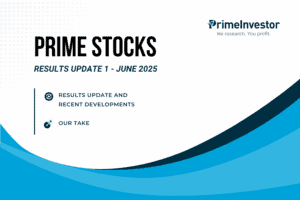The new flexi-cap fund category recently announced by SEBI will mitigate the risk of many multi-cap funds being forced into buying to mid & small cap stocks. The definition of the flexi-cap category is quite open-ended now. The circular requires flexi cap funds to hold least 65% of their portfolio in equity and equity-related instruments to be flexi cap.

We had covered the change in investment universe for multi caps as mandated by SEBI in September, and the potential fallouts of the same here. To recap, SEBI’s September circular made it necessary for funds classifying themselves into the multi-cap category to hold at least 25% each in mid-cap and small-cap stocks.
We had also said that we will let you know what we intend to do with Prime Funds that are multi caps. So, what is the impact of the new circular on Prime Funds?
Prime Funds moving to the new flexi-cap category – no impact
We have three funds in Prime Funds that were multi cap funds:
The funds also feature in some Prime Portfolios.
It is now clear that all these 3 funds will seek to re-classify themselves under ‘flexicap’ – please note that there is no formal notification issued yet, and all are under the proposal stage. Under their present multi-cap category they would have been forced to hold at least 50% of their portfolios in mid and small-cap stocks, which would be a sea-change in their strategies and suitability.
The shift from multi-cap to flexicap cap fund category means 2 things:
- one, the schemes need not rejig their portfolio to fit any changed mandate as the definition of flexi cap allows them to invest across market caps with no restrictions.
- Two, you need not make any change to your portfolio as the schemes’ current strategy, risk level, and portfolio makeup will not be changed to suit any regulatory requirement and will continue as before.
However, since change in category amounts to change in ‘fundamental attributes’ of a fund, the rule is that you will be given a window to exit with no exit load. You need not do anything about such a notification, for the above-mentioned funds.
Please note that for the other multi cap funds (outside Prime Funds) that see a change in category, we will not be making any change in call. We will assess such funds under the appropriate market-cap segment to make our ratings/reviews more meaningful. In other words, we will not merely go by SEBI category to do our ratings/review. This is a practice we have been following even before these circulars.
A new fund category – avoidable chaos
In our view, the creation of a new flexi cap new category only adds to the complexities for an investor and can provide more leeway for fund houses to create new schemes and garner AUM. After the earlier hasty change, SEBI did realize the impact of the same based on feedback it received. It could have therefore simply reinstated the multi-cap category as it was before. This way, an additional fund category could have been entirely avoided.
Let’s list down some of the complexities that this addition will add.
- You will now need to deal with 3 equity categories that are not too easy to understand and where market cap orientations will vary between funds within the category – large & midcap, multi cap and flexi cap. This means more understanding is needed for each of their strategies and assessing which of these fit your portfolio.
- Multi caps will closely resemble large-and-midcap funds given the way they are defined. The large-and-midcap category needs at least 35% in mid-cap stocks. This similarity could have been entirely avoided.
- Past performance of the current multi-cap funds, if they remain multi-caps, will be less relevant for your decision making. For example, with higher allocation to mid and small-cap stocks, their volatility might be far higher and their ability to contain downsides will be lower in future. These funds will now have to start afresh in terms of strategy and portfolio construction. Your decision on the fund’s suitability cannot therefore be made based on past performance.
As an investor, you need to therefore keep tab of the following:
- Know if any of the other multi-cap funds you hold remain in the same category and whether this will significantly push your overall holding in mid and small-cap segment. If so, you need to consider exiting or reducing such holding.
- Understand the broad strategy that a flexicap fund uses and observe whether it uses the same consistently.
- Avoid flexi caps under new fund offers that may come up. Wait for them to build a track record before taking a call. And similarly, avoid multi-cap NFOs that may crop up.
- Note that multi-cap funds will be more aggressive than large & midcap funds given the former’s mandated minimum holding of 50% in mid and small cap stocks.
At PrimeInvestor, we will continue to work on our Prime Ratings and Prime MF Review based on funds’ market cap holding than just based on SEBI categories. To this extent, we will be comparing the right set of funds before we arrive at our conclusion.






3 thoughts on “What the new flexi-cap fund category means to your funds”
Well Summarized and Call to Action. Worth much more than the time spent to read it! This is indeed an article which affirms my faith in being a PrimeInvestor Subscriber!
Thanks sir! Vidya
Great artcile! Thanks for the clear explaination!
Comments are closed.